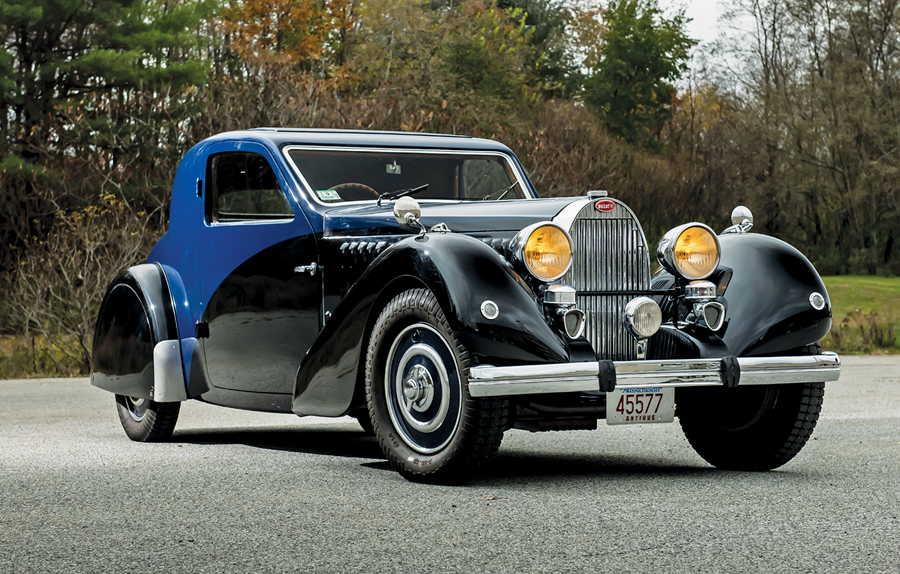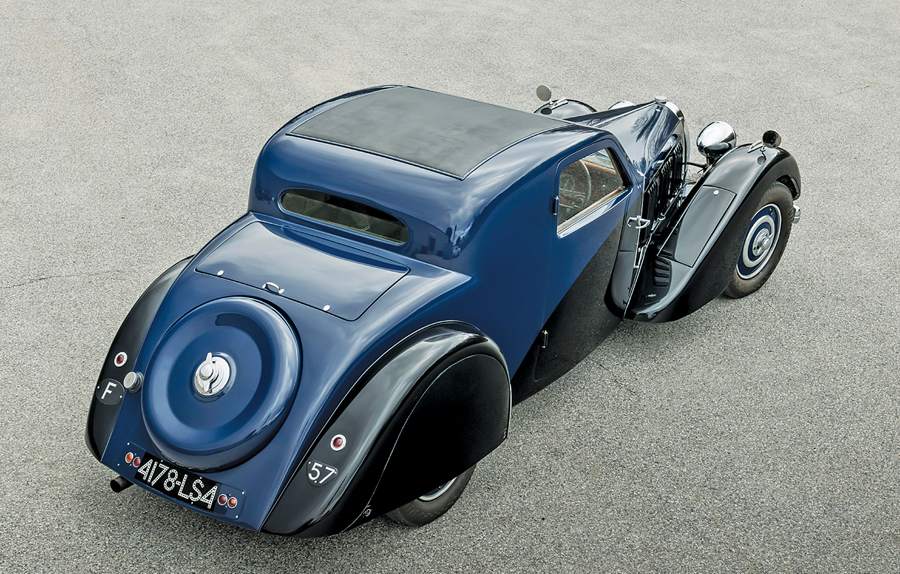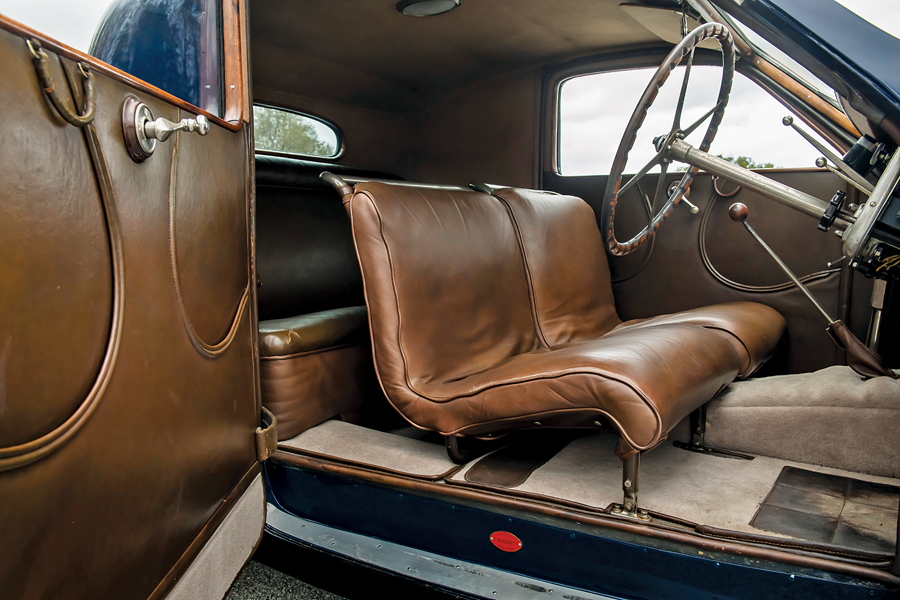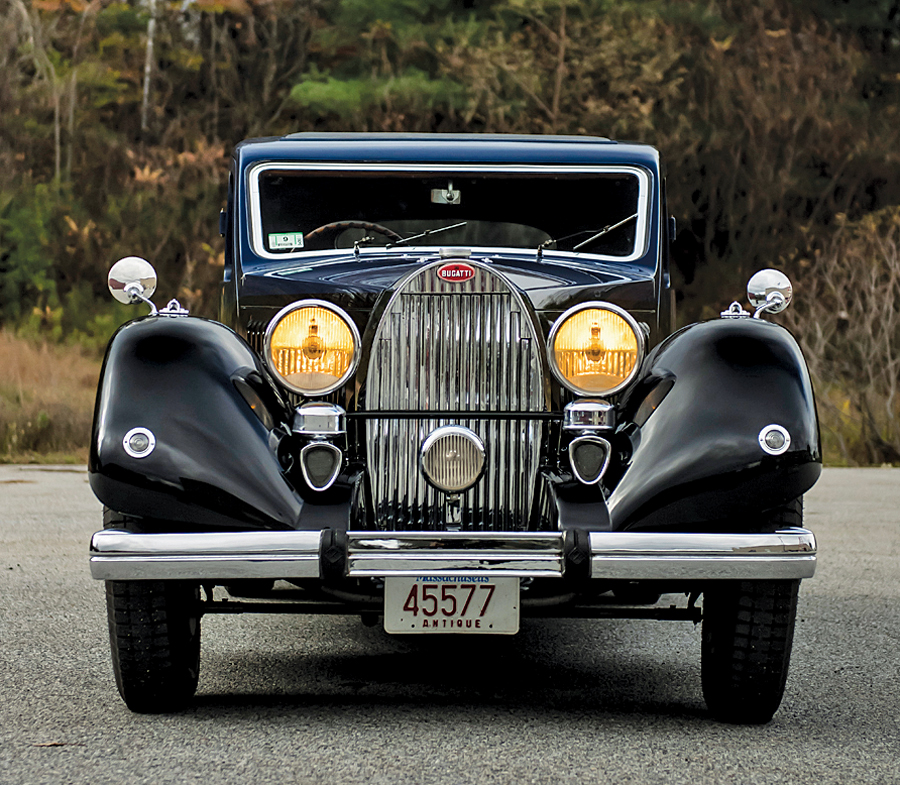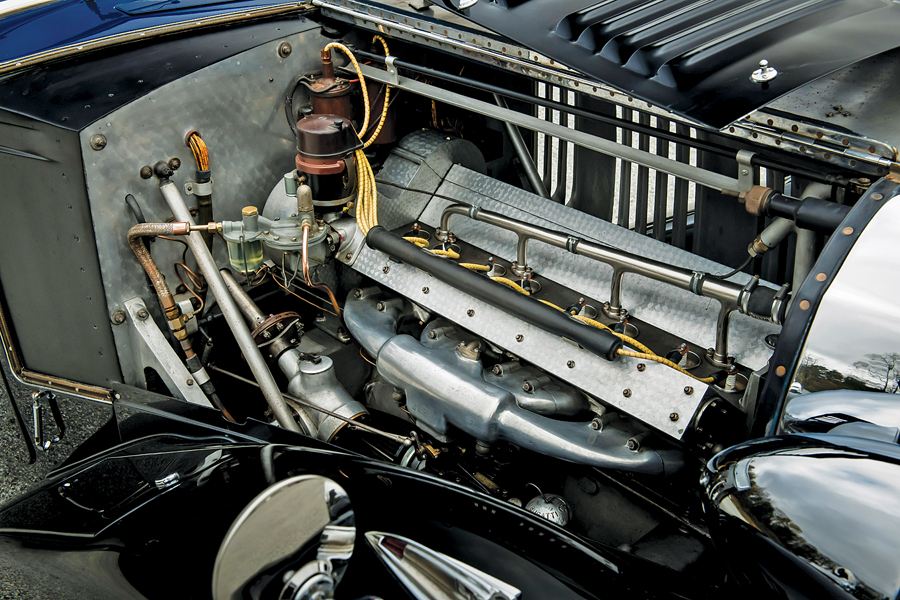SCM Analysis
Detailing
| Vehicle: | 1936 Bugatti Type 57 Two-Light Ventoux Coupe |
| Years Produced: | 1936–39 |
| Number Produced: | Six (two-light) cars; 140 Ventoux in total |
| SCM Valuation: | $580,500 |
| Tune Up Cost: | $6750 |
| Chassis Number Location: | Brass plate on left-side firewall; on upper crankcase at engine rear |
| Engine Number Location: | Brass plate on left-side firewall; on upper crankcase at engine rear |
| Club Info: | American Bugatti Club |
| Website: | http://www.americanbugatticlub.org |
| Alternatives: | 1936 Alfa Romeo 8C 2900, 1936 Bentley 4½ Litre, 1935 Delahaye 135S |
| Investment Grade: | A |
This car, Lot 131, sold for $885,000, including buyer’s premium, at Gooding & Company’s Scottsdale, AZ, auction on January 19, 2019.
The magnetic appeal of the “conservato” car never fails to grab hold of me. Although the word translates literally from Italian as “preserved,” it does not mean a vehicle in suspended animation, pickled from the moment it left the showroom — or driven for a few years and then parked under sheets and blankets for decades in the dark.
A true conservato vehicle has always been loved, carefully maintained and kept in use as intended. It’s never abandoned in garage, barn or field. It was never modified, taken apart to be restored, modernized or tarted up. The only work it has seen is that necessary to keep it mechanically sound, strong and reliable.
Should the paint fade, crack or craze, it is renewed to do its primary job — to protect the body and keep it sound. If the upholstery should become brittle or torn, it is properly repaired as required and no more.
A true conservato car
This 1936 Bugatti Type 57 Ventoux is a case study in the allure of the conservato automobile. It has never been stripped or dismantled for renovation or restoration. Even when the front seat covers were replaced due to increased wear, the original, still-serviceable ones were kept.
It has been painted at least three times: in its original dark blue, then a bright blue and now its current, very appropriate and attractive dark blue with black.
The original body number is stamped on every panel — including the trunk floor and fender storage-box lids. The interior dashboard wood has never been refinished and shows a spectacular, warm patina. The headliner is original. With a full known history from new and many period photographs through the years, inspection at the preview showed that its story of careful use and appropriate maintenance was totally believable.
A leading marque specialist rebuilt the engine, and the car has been driven regularly on the road — including at least three long-distance Bugatti Club tours.
A great car in a buyer’s market
The Ventoux was built in all three series of the Type 57. To my eyes, it is a masterful development of the fastback Superprofileé and curved notchback Semi-profileé coupes designed by Jean Bugatti.
Practical — yet retaining a distinct air of sportiness and elegance — the Ventoux captured the spirit of the capable grand tourer in a genuine 4-seat body. Built in Bugatti’s own coachwork shop, our subject car offers a tantalizing — but ultimately sad — glimpse into what could have been for a post-war Bugatti guided by Jean’s creative genius — had he not been killed in that accident in 1939 at 30 years old.
You will read elsewhere in this issue comments and analysis of the sales results during the 2019 Arizona Auction Week. Despite the impressive figures of total cars sold, overall dollar volume and sell-through rates, many, if not most, cars sold under published low estimates.
Arizona was very much a buyer’s market, with bidders being quite selective in how long they kept their paddles raised and only interested in paying what they had to in order to get the exact car they wanted.
Still a world record
This Bugatti sold under the low estimate, yet the sale set a world record for the model at the same time.
In my view, it was as representative an example of a healthy, rational market as the other sales. Why? Because this car hits every fundamental attribute of value. In any desirable collector object, condition, originality, provenance, beauty and suitability for purpose are key.
For me, everyone at Gooding & Company, many of the attendees at the preview, the seller and the buyer, this Ventoux has it all.
What made this Bugatti stand out was the feeling it exuded of a loved and cherished — yet eminently usable — object. There are shinier examples — but few that have this combination of a good life proudly lived.
The final favorable attribute it possesses is that almost all of the Ventoux coupes were of a “four light” design, with rear quarter windows. Our subject car was one of only six built with a “blind” quarter panel, giving it a more distinctive, sportier look.
Sold to a good owner
This Type 57 will do everything its previous and current owners have asked and will ask of it. On the road or at a concours, it is a true representation of the intentions of Jean Bugatti and the craftsmen who created it 83 years ago.
It is also an exemplar of what is possible when a fine car enjoys a line of responsible custodians who understand a piece of history.
Once a car falls into the hands of someone who neglects it to the point of uselessness — or wants to re-fashion it into a completely re-imagined simulacrum of an original — it cannot be brought back.
During the preview and after the sale, the seller, a well-known and respected figure in the vintage-Bugatti world, expressed his hopes and his pleasure in that the car has gone to a home that will respect its qualities. It will not simply be the base for the fevered imaginings of a concours trophy hunter.
I call this result superbly sold and extraordinarily bought. ♦
(Introductory description courtesy of Gooding & Company.)
